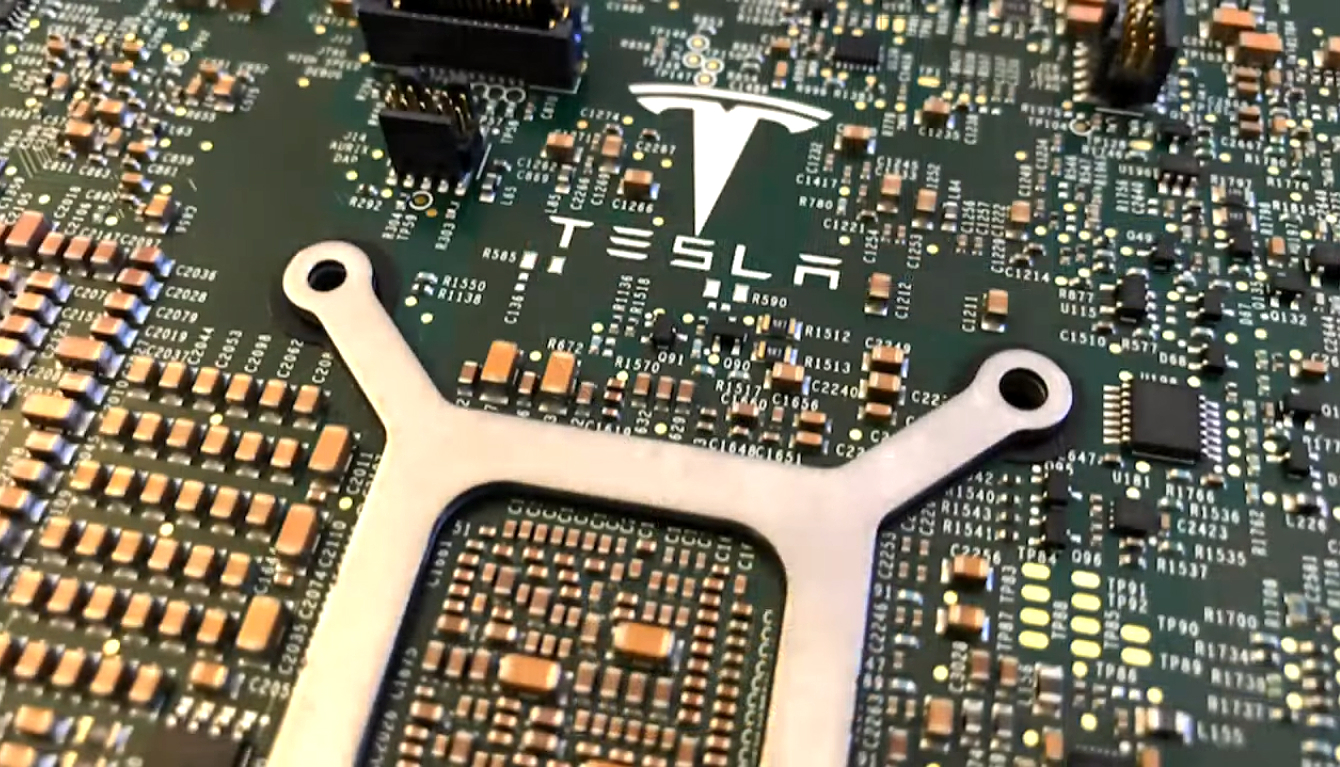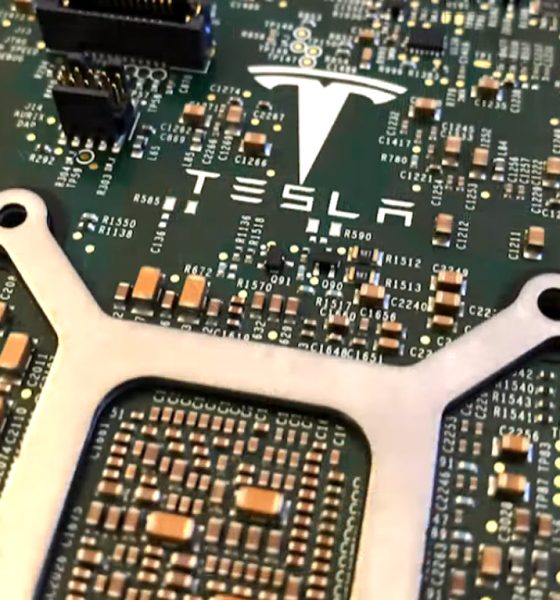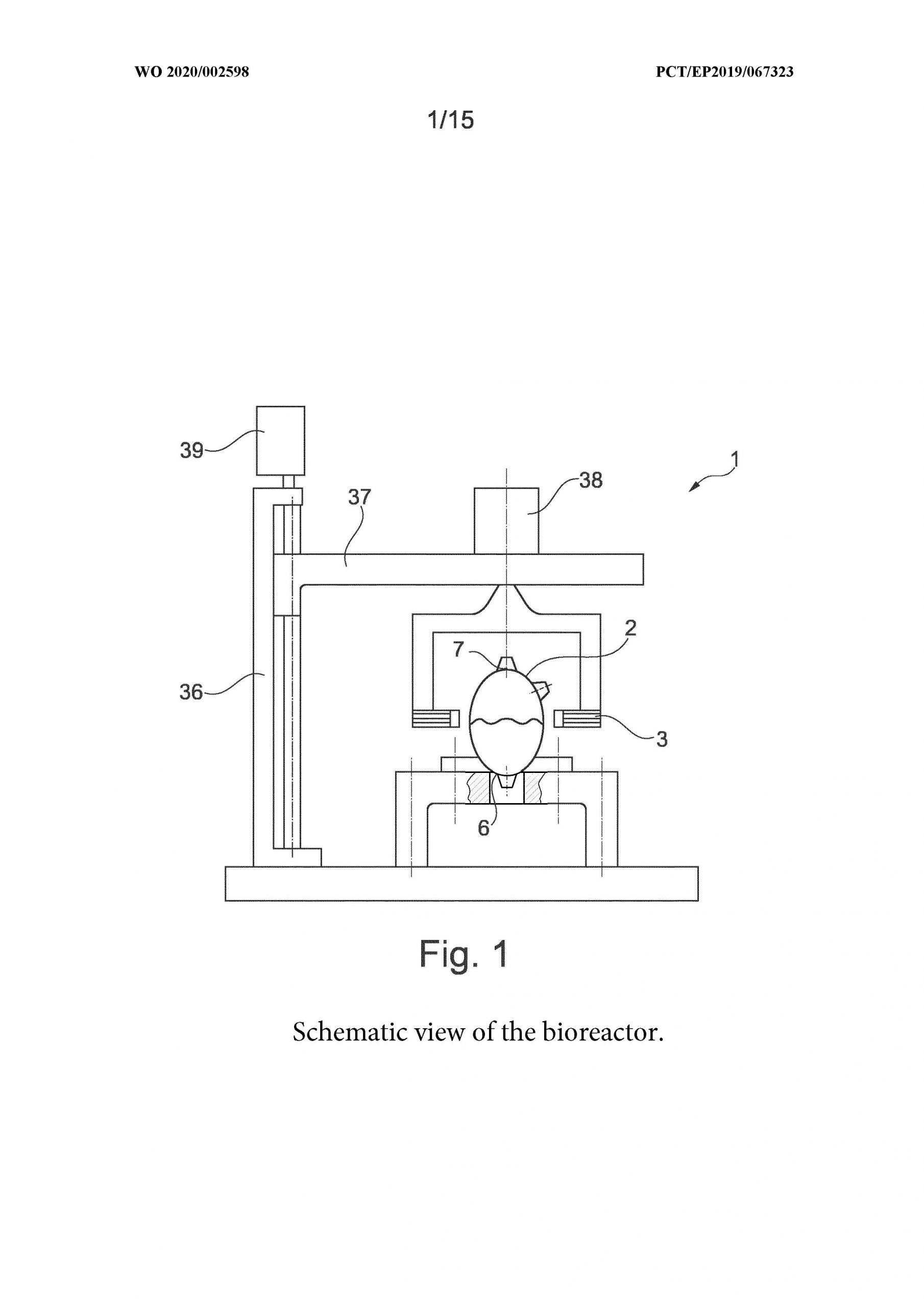

Lifestyle
Tesla lends its automation expertise in search for COVID-19 vaccine
Tesla CEO Elon Musk may have strong disagreements over the political handling of the COVID-19 pandemic, but his actions to help solve the matter strike a more positive note, namely one of progress in vaccine technology.
In a recent Twitter discussion about the uptick in national cases, Musk offered his thoughts on using RNA for immunization therapies.
“In principle, I think synthetic RNA (and DNA) has amazing potential,” he replied. “This basically makes the solution to many diseases a software problem.” Musk then brought attention to the current work Tesla is doing via Tesla Grohmann Automation GmbH in Germany. “Tesla, as a side project, is building RNA microfactories for CureVac & possibly others.”
CureVac AG is a German biotechnology company founded in 2000 with the primary goal of using proteins created with stabilized messenger RNA (mRNA) in disease therapeutics. As described on their official website, the company has “…develop[ed] an extensive in-house nucleotide sequence library that allows us to optimally assemble the various pieces of the mRNA puzzle for the desired therapeutic use…Each CureVac product can be thought of as a tailored molecular creation.” The protein-centric nature of these products may enable the development of a wide variety of therapies, including cancer immunotherapy, antibody production, treatments for rare diseases, and prophylactic vaccines.
In principle, I think synthetic RNA (and DNA) has amazing potential. This basically makes the solution to many diseases a software problem.
— Elon Musk (@elonmusk) July 2, 2020
CureVac’s vaccines use a dose of synthetic mRNA coded for disease-specific proteins or antigens which induce the immune system to respond and produce antibodies. Musk’s comment about diseases being a software problem seems to refer in part to this type of technology. The production side of this specialized mRNA looks to be where their relationship with Tesla is formalized. Specifically, the two companies have developed a bioreactor (referred to by Musk as an ‘RNA microfactory’) which combines Tesla Grohmann’s automation technology with CureVac’s tailored mRNA coding and printing.
A press release by CureVac from February 2019 refers to the bioreactor as The RNA Printer™ describing it as “…a transportable, down-scaled, automated messenger RNA (mRNA) printing facility…that can target known pathogens (including Lassa Fever, Yellow Fever, and Rabies) and prepare for rapid response to new and previously unknown pathogens (referred to by WHO as “Disease X”).” Several partnerships and grants have been accumulated by CureVac to further its development of the machine’s capabilities, and the race for a COVID-19 vaccine has brought even more attention and support to the technology.
Although this pandemic has now provided a spotlight on the Tesla and CureVac partnership, a joint patent application for the bioprinter was originally filed in 2018. Published in January this year, the invention is descriptively titled “Bioreactor for RNA in vitro Transcription” and assigned International Patent Publication No. WO-2020/002598. The Background section of the application provides a bit more insight to the technology, its potential, and why Tesla-style automation really makes a difference in what’s possible:
“A critical step in RNA production is the generation of a suitable DNA template, which at industrial scale is a major cost factor…Manufacturing of RNA requires a large degree of manual handling in a GMP-regulated laboratory executed by well-trained technical staff. In consequence, current established manufacturing processes are time consuming, cost intensive, and require a lot of laboratory space and laboratory equipment.”

Essentially, automating much of the manufacturing process would improve speed and reduce errors from human interaction, just as is the case with Tesla’s automated car manufacturing. Unlike automotive large-scale productions, however, this bioprinter would be much smaller. With staffing needs reduced and the equipment needs reduced to a single machine, portability comes into play.
“…an acceleration of RNA manufacturing would be highly advantageous and of major importance for public health, especially in the context of pandemic scenarios. Further advantageous in that context would be the production of the RNA therapeutics in the region of the outbreak which would, however, require a portable RNA production apparatus.”
It’s not clear exactly which parts of the invention were specifically Tesla’s contribution aside from Musk’s indication that his company would be manufacturing the machines.
Overall, as stated in CureVac’s press release, The RNA Printer™ will be capable of producing enough customized mRNA for 100,000+ vaccine doses within a few weeks and on-site of the outbreak location. The same machine would be flexible enough to be used for a wide variety of pathogens. Notably, CureVac was recently cleared for phase I human trials of its mRNA vaccine for COVID-19.
Musk’s interest in biotechnology is well known to those who follow his many projects and businesses, especially in terms of artificial intelligence as it relates to human-computer interfaces via Neuralink. However, this more traditional philanthropic involvement is surely quite welcome in a world turned upside down by a pandemic.

Lifestyle
Tesla Model S Plaid battles China’s 1500 hp monster Nurburgring monster, with surprising results
There is just something about Tesla’s tuning and refinement that makes raw specs seem not as game-changing.

The Tesla Model S Plaid has been around for some time. Today, it is no longer the world’s quickest four-door electric sedan, nor is it the most powerful. As per a recent video from motoring YouTube channel Carwow, however, it seems like the Model S Plaid is still more than a match for some of its newer and more powerful rivals.
The monster from China
The Xiaomi SU7 Ultra is nothing short of a monster. Just like the Model S Plaid, it features three motors. It also has 1,548 hp and 1,770 Nm of torque. It’s All Wheel Drive and weighs a hefty 2,360 kg. The vehicle, which costs just about the equivalent of £55,000, has been recorded setting an insane 7:04.957 at the Nurburgring, surpassing the previous record held by the Porsche Taycan Turbo GT.
For all intents and purposes, the Model S Plaid looked outgunned in Carwow’s test. The Model S Plaid is no slouch with its three motors that produce 1,020 hp and 1,420 Nm of torque. It’s also a bit lighter at 2,190 kg despite its larger size. However, as the Carwow host pointed out, the Model S Plaid holds a 7:25.231 record in the Nurburgring. Compared to the Xiaomi SU7 Ultra’s record, the Model S Plaid’s lap time is notably slower.
Real-world tests
As could be seen in Carwow’s drag races, however, Tesla’s tech wizardry with the Model S Plaid is still hard to beat. The two vehicles competed in nine races, and the older Model S Plaid actually beat its newer, more powerful counterpart from China several times. At one point in the race, the Xiaomi SU7 Ultra hit its power limit due to its battery’s temperature, but the Model S Plaid was still going strong.
The Model S Plaid was first teased five years ago, in September 2020 during Tesla’s Battery Day. Since then, cars like the Lucid Air Sapphire and the Xiaomi SU7 Ultra have been released, surpassing its specs. But just like the Model Y ended up being the better all-rounder compared to the BYD Sealion 7 and the MG IM6, there is just something about Tesla’s tuning and refinement that makes raw specs seem not as game-changing.
Check out Carwow’s Model S Plaid vs Xiaomi SU7 drag race video below.
Lifestyle
500-mile test proves why Tesla Model Y still humiliates rivals in Europe
On paper, the BYD Sealion 7 and MG IM6 promised standout capabilities against the Model Y.

BYD is seeing a lot of momentum in Europe, so much so that mainstream media has taken every opportunity to argue that the Chinese automaker has beaten Tesla in the region. But while BYD sales this year in Europe are rising and Tesla’s registrations remain challenged, the raw capabilities of vehicles like the Model Y are difficult to deny.
This was highlighted in a 500-mile challenge by What Car? magazine, which showed that the new Tesla Model Y is more efficient, cheaper to run, and more reliable than rivals like the BYD Sealion 7, and even the nearly 400 KW-charging MG IM6.
Range and charging promises
On paper, the BYD Sealion 7 and MG IM6 promised standout capabilities against the Model Y. The Sealion 7 had more estimated range and the IM6 promised significantly faster charging. When faced with real-world conditions, however, it was still the Model Y that proved superior.
During the 500-mile test, the BYD nearly failed to reach a charging stop, arriving with less range than its display projected, as noted in a CarUp report. MG fared better, but its charging speeds never reached its promised nearly-400 kW charging speed. Tesla’s Model Y, by comparison, managed energy calculations precisely and arrived at each stop without issue.
Tesla leads in areas that matter
Charging times from 25% to 80% showed that the MG was the fastest at 17 minutes, while Tesla and BYD were close at 28 and 29 minutes, respectively. Overall efficiency and cost told a different story, however. The Model Y consumed 19.4 kWh per 100 km, compared to 22.2 for MG and 23.9 for BYD. Over the full trip, Tesla’s charging costs totaled just £82 thanks to its supercharger network, far below BYD’s £130 and MG’s £119.
What Car? Magazine’s testers concluded that despite BYD’s rapid sales growth and the MG IM6’s seriously impressive charging speeds, Tesla remains the more compelling real-world choice. The Model Y just offers stability, efficiency, and a proven charging infrastructure through its Supercharging network. And as per the magazine’s hosts, the Model Y is even the cheapest car to own among the three that were tested.
Watch What Car? Magazine’s 500-mile test in the video below.
Lifestyle
Tesla Cybertruck slapped with world’s least intimidating ticket, and it’s pure cringe
One cannot help but cringe and feel second-hand embarrassment at the idea of a person just driving around with a stack of these babies.

A Cybertruck parked at Stanford Shopping Center in California was recently hit with what might be the most try-hard piece of paper ever slipped under a wiper blade: a “fake citation” accusing the driver of supporting a “fascist car.”
The note, shared on X by Tesla staff program manager Ryan Torres, quickly made the rounds on X, where it quickly gained attention as an example of how not to protest.
The world’s least intimidating ticket
According to the citation, the supposed “violation” was “driving a fascist car.” The remedial action? Take the bus, call an Uber, or ride a bike. The note also dubbed Elon Musk a “chainsaw-wielding Nazi billionaire.” Now, protests against Tesla and Elon Musk have become commonplace this year, but one cannot help but cringe and feel second-hand embarrassment at the idea of a person just driving around with a stack of fake anti-Tesla/Musk citations.
Torres pointed out the irony himself in his post on X. Tesla currently employs over 140,000 Americans, and SpaceX has put the U.S. firmly back at the top of space technology. As Torres put it, maybe the person behind the world’s least intimidating ticket should “read a book on innovation before vandalizing” other people’s property.
Peak performative clownery
Not to mention that the fake ticket’s logic collapses under its own weight. EVs like the Cybertruck are literally designed to reduce emissions, not “destroy the economy.” If anything, Tesla has bolstered the United States’ economy by fueling jobs in engineering, manufacturing, and clean energy. It’s not the first time a Tesla has been the target of vandalism or politically charged notes, but this one stands out for sheer cringe value.
Torres summed it up neatly: “Peak clownery.” On that point, at least, the citation earns full marks. In a way, though, perhaps cringe fake tickets are not as bad as the literal firebombs that were being thrown at Tesla stores and cars earlier this year because some critics were gleefully misinformed about Elon Musk.








